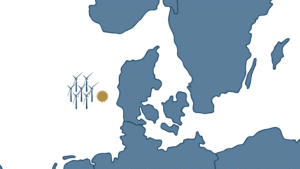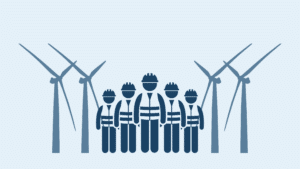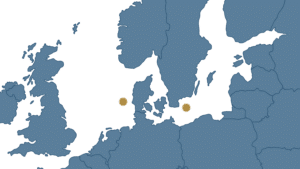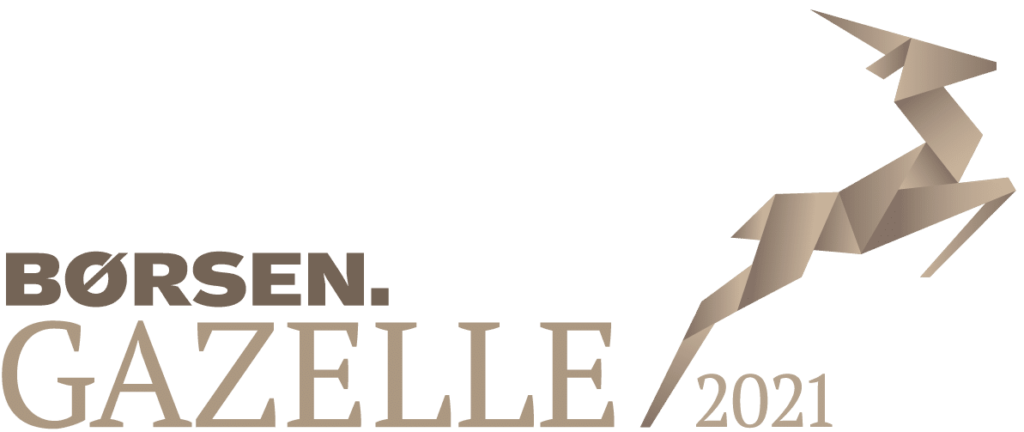A project to build two energy islands in Denmark, the largest construction project in Danish history to date, have been greenlit by the Danish government.
An artificial energy island will be constructed in the North Sea, and the island of Bornholm will house a power hub to collect power from offshore wind turbines, which will be placed in the Baltic Sea approx. 15 kilometers from the coast of Bornholm. These energy islands will function as hubs to create better connections between the generated energy and the energy systems in the regions around the two seas.
Since the island in the North sea will be placed outside the 12 nautical mile border, the area in which this island is constructed is technically not defined as Denmark in terms of taxation. Hence, legislation to expand Denmark’s area of taxation has been adopted and has entered into force from July 1st, 2023.
Denmark’s exclusive economic zone
A key element in the newly adopted legislation is the exclusive economic zone. This zone is defined and governed in accordance with article 56 and 60 under the UN Convention on the Law of the Sea. The zone also includes the entirety of the Danish continental shelf.
During the legislative process, the Danish Ministry of Taxation have confirmed that the definition of Denmark’s territory is an internal practice, which means that the double tax treaties include the necessary mechanisms to apply taxation to Denmark – if the distributions articles award it that is.
Highlights
- Denmark has expanded its geographic area of taxation to include the exclusive economic zone
- A new, broad definition of permanent establishment has been introduced to encompass the activities associated to the activities in the exclusive economic zone
- Foreign corporations with activities in the exclusive economic zone should be prepared for taxation to Denmark
- Employees working in the exclusive economic zone should prepare for taxation to Denmark
- Hiring-out labour taxation has been extended to also include work in the exclusive economic zone
- The rules will be in force from 1st January 2024
- Double tax treaties already hold the necessary definitions to include the exclusive economic zone as “Denmark”
Public documents
- L 73 (text in Danish)
- More to come...
Do you want assistance with your operation in Denmark?
- Analysis of tax and social security liability in the planning of your upcoming project in Denmark
- Analysis of tax and social security liability on your projects in Denmark
- Analysis and optimisation of assignment structure
- Computing employee costs, net-of-tax
- Tailored assistance from mobilisation to de-mobilisation in terms of registration, payroll, tax, and social security compliance for your workforce
- Collaboration with partners or in-house resources in resident countries to settle taxes and avoid double taxation
- Install trust and safety amongst your work force by engaging directly on critical, close, and complex matters
Get more information
* By checking GDPR Consent, you agree to let us store the information you provided in our system. You can always contact us to permanently remove your data.
Related News

Tender for Danish Energy Island postponed
The intention to provide the tendering material for the North Sea Energy Island before the summer holiday has been cancelled.

Energy Islands: Taxation of individuals
Denmark is constructing a number of Energy Islands, which will serve as hubs for green energy manufacturing and distribution. Denmark’s exclusive economic zone has been expanded as a consequence. Read more about how this will affect taxation of individuals here.

Energy islands: The introduced taxation in brief
The construction of two energy islands off the coast of Denmark has caused several new tax liabilities to be introduced for the activities performed in relation to this. Read more about the introduced taxation and get the highlights here.

Navigating Compliance and Taxation for the Danish Energy Islands
The Danish government has expanded its exclusive economic zone, giving the go-ahead to the largest construction project in the nation’s history: the creation of two energy islands. The implications of these developments on compliance and taxation are noteworthy.
about energy islands in general
Frequently asked questions
Until now countries have built isolated offshore wind farms to meet their own needs, but energy islands can connect and distribute power from surrounding offshore wind farms by pooling the power from multiple offshore wind farms and efficiently feed this directly to several countries. With abundant wind resources and plenty of room to build and expand, the energy islands make it possible to build offshore wind farms and use the power generated from wind as a renewable energy source at an unprecedented scale.
An energy island serve as a hub, a green power plant, which gathers electricity from the surrounding offshore wind farms and distribute green electricity to the electricity grid in Denmark as well as directly to other countries through cable connections. This way electricity generated in an area with vast wind resources can easily be distributed to areas with demand for electricity all the while ensuring that the energy generated from the turbines is utilised as efficiently as possible.
The two energy islands are based on the same concept with offshore wind farms connected to electrotechnical facilities on the islands, but they will not be entirely identical. The energy island in the Baltic Sea will be established on Bornholm, meaning that the electrotechnical equipment used in the collection and distribution of the energy will be located on land, whereas the energy island in the North Sea will be an artificial island built specifically for that purpose.
One energy island will be located on the island of Bornholm in the Baltic Sea, a collection point for power generated from offshore wind turbines approximately 15 kilometers from the coast of Bornholm. The other energy island will be located in the North Sea, about 100 km off the coast of Thorsminde.
At the present time, the energy island in the North Sea is expected to be operational no later than in 2033. At that time, the ambition is that it will have a minimum wind power capacity of 3 GW from surrounding offshore wind farms, with the potential for a further build-out of 10 GW. The energy island on Bornholm is expected to be operational from 2030.
The Danish State will own 50.1 % of the islands with private partners as co-owners making up the remaining 49.9 %. Energinet (link) will construct and own the power transmission grid from the energy island to Denmark. Energy from the islands is expected to be piped onshore close to 2 large Danish cities, Esbjerg and Holstebro (! what about the Bornholm one?), where there are already extensive connections to the Danish power grid. The power transmission grid from the energy island to other countries will be constructed and owned by Energinet jointly with the relevant operators.
It will be possible to build the energy island and offshore wind turbines in the studied areas of the North Sea without “causing serious and irreparable impacts on nature, the environment and planning conditions” according to an initial study performed by COWI for the Danish Energy Agency.
The Danish Energy Agency has initiated detailed studies of the marine environment in the planned area identified for the energy island to provide a basis for assessing impacts of the project on nature and the environment. These studies include observations and samples of seabed animals and plants, marine mammals, birds, fish, and bats. The results of the studies will be published on the Danish Energy Agency’s website.
The Danish system operator of the transmission network, Energinet, has been instructed to commence preliminary studies on the seabed around Bornholm and the area in the North Sea where it has been decided the island and offshore wind farms will be located. These preliminary studies are intended to ensure that both the offshore wind farms and the artificial island are placed in areas that are suited for construction and where they will have the least possible impact on the environment. Soruce: The Danish Energy Agency
Efforts are underway to sign binding agreements with Denmark’s neighbours to ensure that we can export the green electricity to other European electricity grids than our own.
Decisions need to be made regarding where the islands should be connected to land, including decisions about where on land to place the facilities to enable safe and stable routing of electricity to the Danish electricity grid.
The energy islands are one component of the development of our future energy systems, and the content of the political agreements includes an ambition to transform the electricity from the energy islands into new forms of energy (e.g. Power-to-X). Hydrogen is expected to play an important role in the green transformation, for example in the transport sector. The first hydrogen plants based on green power and facilities for production of green fuels, will probably be operational onshore before the energy island are completed. Organisations are studying whether hydrogen production on the islands (or possibly directly in the wind turbines) and transport to shore, e.g., via a hydrogen pipe, is economically advantageous. It will depend greatly on the development of the technology in the next 10-15 years, when the renewable hydrogen is to be produced. Read more on northseaenergyisland.dk



 ® – 2024. All rights reserved. Crossbord
® – 2024. All rights reserved. Crossbord